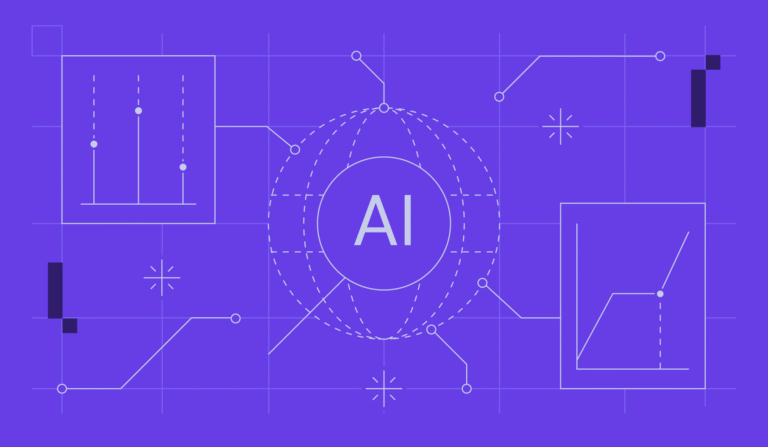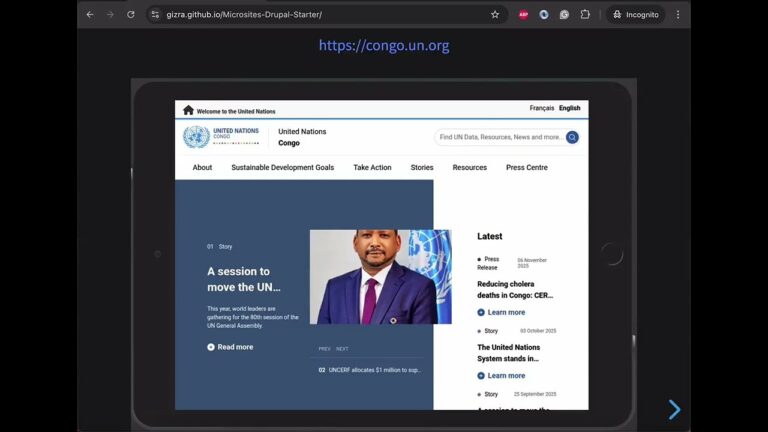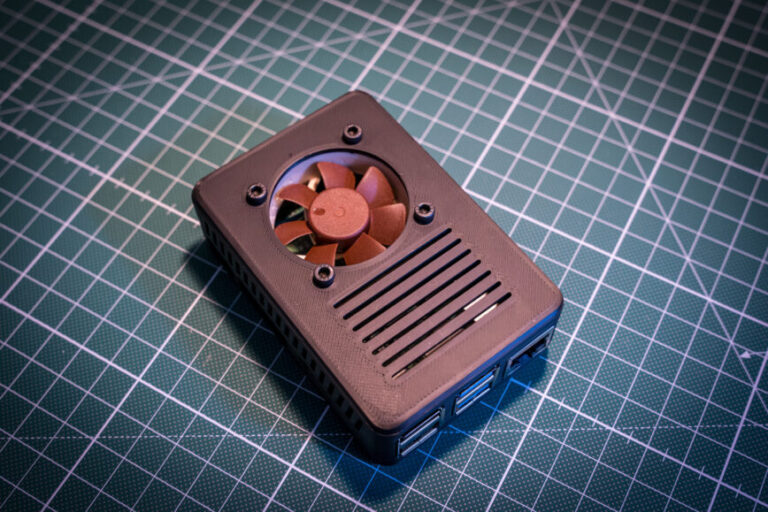In this article, you’ll find recent commentary from executives and decision-makers of industry-leading observability providers on two key questions regarding the evolution of observability.
Published: May 17th, 2021 | Updated: Aug 1st, 2024.

The observability cloud continues to expand and evolve rapidly.
Over the past year, millions of workers left their offices to work from home, while billions of consumers rapidly shifted online to access an expanding list of products and services.
This accelerated migration adds distinct challenges to ITOps, such as remote infrastructure, ISPs, VPNs, and network security, to name a few. The ongoing digital transformation also results in an overall increase in the demand for full-stack observability, infrastructure monitoring, and AIOps (Artificial Intelligence for IT Operations) in delivering excellent digital experiences to both consumers and employees.
Table of Contents
The evolution of observability
Observability provides access to all the data you need, including full-stack tracing, key metrics, and logs analysis, by way of infrastructure monitoring, APM (Application Performance Monitoring), DEM (Digital Experience Monitoring), and more, for an ever-expanding list of systems, applications, and technologies.
In addition to increased security, we can expect more … notable acquisitions, mergers, collaborations and joint launches between the fiercest of competitors.
As previously mentioned, here are the two questions that I asked the leading observability providers regarding the evolution of observability (you can read the answers below):
- What innovations and advancements have your company made over the past year?
- What should we anticipate from your company within the next 12 months?
Highlights / Summary
Below I’ve summarized some of the developments in observability over the past year and what to expect in the future based on the responses below. These are the main points that stood out to me. There may be completely different points that stand out to you. You can share your feedback, along with this article, via Twitter, LinkedIn, Facebook, or feel free to leave a comment below.
Over the past 12 months, observability companies have:
- Restructured their pricing models due to the changes over the past 12 to 18 months
- Increased their number of remote workers, with some companies going fully remote
- Launched new observability platforms and categories
- Increased their focus on data privacy and security
- Made additional integrations available for popular cloud platforms
- Strengthened their three pillars of observability. (metrics, tracing and logs)
- Provided faster troubleshooting using AIOps (big data, analytics, and machine learning)
- Enhanced DEM (Digital Experience Management) and DEM tools
- Increased their support for OpenTelemetry and other open-source initiatives
- Made several key acquisitions of other observability and monitoring platforms
Within the next 12 months, observability companies will:
- Deliver even more value, additional products and more functionality
- Increase their focus on the critical nature of security due to the rapid digital transformation
- Continue to optimize their platforms to keep up with rapid scaling and increased data
- Expand the capabilities of AIOps
- Provide more end-to-end visibility using APM, DEM, RUM (Real User Monitoring), etc.
- Improve observability to be significantly more automated
- Make further commitments to open source, open standards, and developer communities
- Provide better integration, support, and products for ITOps and other large teams
- Along with cloud-native observability; announce new launches for Kubernetes-native observability
- Continue to perform additional acquisitions and mergers and collaborations
Scroll down or click each company’s logo to read their response.















The answers:
Datadog on observability

What innovations and advancements have Datadog made over the past year?
“Over the past year, Datadog continued its rapid pace of product development and global expansion, with offerings in new categories including Incident Management and Error Tracking, a new partnership with Microsoft Azure, and the addition of Windows OS support for Network Performance Monitoring, which expanded Datadog’s coverage of Windows Server environments. In particular, Datadog greatly expanded the scope of its Security capabilities, with new products and features including Compliance Monitoring, Security Monitoring, Threat Intelligence, and the acquisition of application security provider Sqreen.
Finally, Datadog also doubled down on AIOps with the introduction of Watchdog Insights (augmented troubleshooting) and Watchdog automated Root Cause Analysis, both of which assist customers with decreasing incident resolution time.”
What should we anticipate from Datadog within the next 12 months?
“Datadog will continue to meet the needs of its customers over the next year and beyond. Infrastructure monitoring, APM, Log Management, and Security will become even more critical as businesses migrate to the cloud and reach their customers through digital channels. Organizations will learn from and expand upon their experiences during the pandemic, and will increasingly seek to consolidate, modernize, and automate their cloud operations, which will necessitate comprehensive, uniform observability.
Additionally, companies’ observability data pipelines will be of crucial importance, as the ease and speed with which this data is ingested has downstream impacts on the entire digital business. Datadog’s acquisition of Timber.io and the Vector data platform will help customers improve their pipelines and better manage their observability data in their environments. Across the entire Datadog platform, we will expand and strengthen the functionality of our products and continue with the right Artificial Intelligence technologies to ensure our customers can continue to grow their own businesses reliably and securely.”
Renaud Boutet
Senior Vice President, Product – Datadog
Instrumental on observability

What innovations and advancements have Instrumental made over the past year?
“Instrumental has become increasingly focused on simplifying AWS infrastructure monitoring for small businesses and teams. Our customers say other monitoring tools require a lot of knowledge, time, money, or all three. We’ve taken our industry-leading AWS integration and expanded upon it with automated monitoring management. Your monitoring always matches your infrastructure, and each graph and alert is clearly described.”
What should we anticipate from Instrumental within the next 12 months?
“AWS’s complexity is increasing rapidly, and so is our ability to navigate that complexity on behalf of our customers. Our AWS monitoring doesn’t require a dev-ops background to understand. Features like AWS anomaly detection and more expressive, cross-service dashboards will further simplify Instrumental’s infrastructure monitoring.”
James PadenChief Strategy Officer – Instrumental
ManageEngine on observability

What innovations and advancements have ManageEngine made over the past year?
“The year 2020 was a roller-coaster ride for all of us, owing to the unpredictable predicament the pandemic had thrust upon us. The pandemic created a need to accelerate digital transformation projects in enterprises. As a result, many businesses fast-tracked their projects with not much time for a comprehensive PoC or lengthy planning cycles. It is possible that a lot of companies opted for quick-fix solutions and short-term fixes. This has put a lot of strain on IT departments to maintain MTTR with a remote IT department and provide optimal user experience for both customers and the hybrid workforce.”
“To support the faster pace of public cloud and containerized adoption across organizations, we advanced our cloud monitoring capabilities by supporting new services of AWS, Azure, Google Cloud and Oracle Cloud platforms as well as service mesh architectures such as Istio. We added distributed transaction tracing capabilities and application topology maps to our core APM capabilities. We also improved our automated fault management capabilities by bringing in ML-based anomaly detection.”
What should we anticipate from ManageEngine within the next 12 months?
“The trends of the hybrid workforce and digital transformation acceleration are expected to remain the norm for the foreseeable future. Modern cloud environments are highly dynamic and run a complex ecosystem of containers and microservices.”
“Keeping this in mind, we plan to further our grip on the observability industry by supporting more cloud infrastructure and container services such as Alibaba Cloud, Amazon EKS, and Azure Kubernetes as well as provide AI-based predictive analysis capabilities. We will also increase our monitoring coverage of areas such as virtual networks, databases, and business management to aid our customers monitor and improve their businesses. Our endeavor is to provide full-stack observability and advanced automation capabilities to enable various stakeholders such as DevOps, IT, SRE, CloudOps, etc. to achieve their goals.”
Arun Balachandran
Senior Marketing Manager – ManageEngine
Site24x7 on observability

What innovations and advancements have been made by Site24x7 over the past year?
“Being a cloud-based Saas product we were able to cater to our customers without any setbacks. More than serving our customers, we also considered the situation at hand and reorganized our priorities – monitoring support for remote infrastructure took the spotlight and we rolled a slew of functionalities to support our customers. Zoom monitoring, Microsoft Office 365 monitoring, support for monitoring VMware VDI, quality of VoIP calls, VPNs, virtual desktops, and SNMP counters were some of the key offerings that were released to make work from home easy.”
“On the other side of the coin, we also aligned our product offerings to match the industry demands and requirements. As the industry moves towards serverless and distributed systems, observability becomes the need of the hour. Observability forms the base for any monitoring system. Only if your system is observable, can you monitor them. Since observability helps to understand and tackle the complexities in the IT environment, there is a constant need for innovations and improvisations to it. Our enhancements/advancements in observability are in strengthening its 3 pillars :
- Collecting relevant and detailed metrics across all layers of the cloud architecture, applying AI-powered analysis on top of the metrics collected, and reporting them via reports/alerts proactively even before the customer is impacted.
- Support for distributed tracing to pinpoint the problematic line of code in a containerized microservice architecture and help with enhancing the performance of the distributed applications.
- Collecting logs from the distributed remote apps and viewing them from a single console with easy search/query options helps IT Admins resolve problems quickly.”
What should we anticipate from Site24x7 within the next 12 months?
As a company that focuses on R&D, we always try to adopt the latest technologies and transfer the benefits to our customers. Some of the features that can be expected in the coming year are as follows: AIOps in observability, Ease of Configuration, support integrations in CI/CD pipeline, open tracing / open telemetry support to make the monitoring agent vendor-neutral, Smarter & Proactive Incident Management.
Rajalakshmi Srinivasan
Director – Product Management – Site24x7
Solarwinds on observability

What innovations and advancements have been made by Solarwinds over the past year?
“Though the move from on-premises to the cloud and hybrid IT was well underway before the pandemic, this transition was accelerated by COVID-19. In 2021, traditional IT professionals will have to rethink how to best manage apps as hybrid IT becomes the new reality. One of the major challenges accompanying this is simultaneously managing legacy and modern applications. To do this effectively, tech pros will need to refocus efforts on implementing full-stack application performance management (APM) to best optimize their environments and resolve application performance problems faster and more efficiently.”
“Over the last year, we’ve worked to address this need and recently unveiled the APM Integrated Experience for the SolarWinds® application performance management (APM) solutions—AppOptics™, Loggly®, and Pingdom®—consolidating access to application performance metrics, traces, logs, and user experience into a common navigation experience for technology professionals. The new APM Integrated Experience helps reduce much of the complexity associated with modern APM by streamlining visibility into critical application and infrastructure performance and empowering tech pros with faster, easier troubleshooting.”
What should we anticipate from Solarwinds within the next 12 months?
“With integrated APM, application-level assessments such as response time, load patterns, resource usage, and root cause summary will make it easier to proactively identify problems, allowing optimal performance and freeing up tech pros’ time. In turn, this will lessen the impact on users and the bottom line, which will be the main business priority in a post-COVID-19 world.”
“Over the next 12 months, you’ll see SolarWinds continuing to extend observability capabilities through ongoing enhancements to the APM Integrated Experience. We’ll remain committed to broadening APM access by providing powerful APM capabilities that are easy to use and affordable and deliver the end-to-end visibility tech pros need to effectively manage today’s applications.”
Steve Stover
VP Product Strategy – SolarWinds
Aternity on observability

What innovations and advancements have been made by Aternity over the past year?
“The pandemic accelerated a lot of digital transformation projects and highlighted the need for Digital Experience Management (DEM) tools to ensure a remote workforce could maintain the same level of digital experience at home. To support this acceleration, Aternity enhanced our SaaS-based DEM platform with new functionality specifically designed for fast-tracked digital transformation initiatives, the unexpected needs of a remote workforce, the future hybrid workforce, and the customer digital experience.”
“Key advancements from the past year include the introduction of the Digital Experience Management Quadrant (DEM-Q) which enables companies to benchmark their digital experiences against other companies to ensure they’re staying ahead of the competition, a new troubleshooting dashboard that empowers IT teams with increased visibility to isolate and remediate IT issues more efficiently, and the debut of a partnership and product integration with Intel.”
What should we anticipate from Aternity within the next 12 months?
“Over the next year, Aternity will continue to develop new and exciting ways for our customers to understand the human impact of their employee and customer digital experience. These new product capabilities will help translate IT findings into the actual experience of employees and customers, enable our customers to identify opportunities for continuous improvement, and easily explain the impact across the business.”
“2021 will be defined by the transition to a hybrid workforce and understanding how that will impact employee satisfaction and productivity is a critical need for companies across the world. Aternity will continue to support our customers during this transition with the industry’s deepest and broadest insight into the digital experience for employees and customers.”
Jon Hodgson Aternity. –> Now Riverbed.
Vice President of Product
Dynatrace on observability

What innovations and advancements have been made by Dynatrace over the past year?
“Dynatrace introduced some significant new innovations over the last year, including the addition of two new Modules to our platform. We introduced Dynatrace Application Security in December, to support DevSecOps teams with more precise, real-time insights into the source, nature, and severity of software vulnerabilities in both production and pre-production applications. This allows them to make more informed decisions in real-time, mitigate risks with greater efficiency, and accelerate digital transformation with increased confidence.
“In February, we introduced our Cloud Automation Module, to support continuous delivery and enable faster, higher quality release cycles. This Module was built on a fully supported version of Keptn, an open source initiative that provides an enterprise grade control plane for cloud native application lifecycle orchestration. As a result, our customers can use Dynatrace to create an automated, unbreakable software delivery pipeline, supported by full lifecycle observability and AIOps capabilities.
“We also enhanced our OpenTelemetry support by allowing customers to send its observability data directly to the Dynatrace platform when agents are not possible or necessary. This adds to what is already automatically captured by Dynatrace OneAgent®, such as pre-instrumented open-source frameworks, cloud services, and custom metrics. As a result, customers can use the OpenTelemetry open-source standard for any data source, and leverage Dynatrace’s industry-leading AIOps and automation capabilities to deliver predictability and precise actionability across their cloud-native technologies.”
What should we anticipate from Dynatrace within the next 12 months?
“The future will be hyper-automated and AI-powered, which is why we’re continuing to invest in our platform’s AIOps capabilities to help our customers automate more. Our aim is to further bridge the divide between business, development, security, and operations teams. To support this, we’ll continually invest in creating the easiest and most reliable way to harness digital services data within its full context, to drive innovation and business value for the world’s largest organizations.”
Abdi Essa
Regional Vice President, UK – Dynatrace
New Relic on observability

What innovations and advancements have been made by New Relic over the past year?
“The past year has further reinforced a growing need for observability platforms that enable businesses to accelerate digital transformation efforts and scale their digital stacks. Understanding challenges and changes to an organization’s tech stack is crucial to their success and many are turning to New Relic to make this happen.”
“In October 2020, New Relic was named the Customers’ Choice in the 2020 Gartner Peer Insights ‘Voice of the Customer’: Application Performance Monitoring.”
“In December 2020, New Relic announced its acquisition of Pixie Labs, a next-generation machine intelligence observability solution for developers using Kubernetes.
“In February 2021, New Relic announced New Relic Explorer, its reimagined Full-Stack Observability experience that delivers new, innovative visualizations and capabilities to give engineers unprecedented visibility into their complete estate.”
“In April 2021, New Relic was recognized by Gartner for the ninth time as a Leader in its Magic Quadrant for Application Performance Monitoring report.”
What should we anticipate from New Relic within the next 12 months?
“Software development is increasingly becoming and will continue to become, data first. Observability will emerge as critical to not just monitoring software, but the data that drives the software as well, due to the prolific use of machine learning. On May 4, New Relic announced major commitments to open source, open standards, and developer communities. As part of the announcement, New Relic is open-sourcing Pixie and is in the process of contributing the Kubernetes-native observability platform to the Cloud Native Computing Foundation (CNCF) as a sandbox project. AWS and New Relic have also announced plans to collaborate on Pixie Open Source integrations to simplify monitoring and performance of AWS Container applications.”
“Investments with the CNCF and the contribution of Pixie will help establish New Relic as the de facto Observability SaaS vendor for highly distributed deployments, as well as reinforce our open-source strategy to our existing customers and the marketplace.”
“New Relic was the first SaaS observability platform and now is one of the most committed, community-focused converts to open source. As we look to the next six months and beyond, we will continue to deliver on developer promises and provide observability that has become critical to not just monitoring software, but the data that drives the software as well.”
Nočnica Fee
Developer Advocate – New Relic
Oracle on observability

What innovations and advancements have been made by Oracle over the past year?
“The pandemic gave us heightened conviction and resolve to enable remote development and operations in support of a non-stop economy. Oracle’s approach to observability is unique because unlike most vendors, we build and manage our own cloud infrastructure and services. We use every tool you can imagine, and we have a deep understanding of the challenges developers and operators face. For us, 2020 was the culmination of a multi-year development project to deliver a complete observability and management platform, designed to address key requirements: 1) Eliminate data silos with an end-to-end observability solution for hybrid, multi-cloud, and on-premises environments, 2) Deep, full-stack performance insights powered by machine learning across end-user experience, distributed application components, database, and storage tiers, and 3) Interoperability as a native feature. The result is Oracle Cloud Observability and Management Platform. A comprehensive solution consisting of a suite of integrated services that provide full stack visibility and rapid performance insights for any technology deployed anywhere. We recently invited ESG analyst Alex Arcilla to perform a detailed technical validation and we are delighted to share the results of this study (PDF download).”
What should we anticipate from Oracle within the next 12 months?
“In 2021 and beyond, we will focus on delivering more value to our customers through cost-efficient services that encourage consumption and remove barriers that prevent adoption. We want our customers to freely move data and take advantage of our solutions even as they scale their development and operations, no matter where their code runs. We will also be delivering key enhancements that brings the observability ecosystem together through partner collaborations and open standards, new trace explorers for microservices and Kubernetes, full lifecycle management for Oracle Databases deployed in multicloud, advanced curated ML-based anomaly detection and capacity planning, richer API, CLI, and SDK support for resource management, and deeper integration with value-added services on OCI including monitoring, and notifications.”
Mughees Minhas
Product Management Vice President of Enterprise and Cloud Manageability – Oracle
Mahesh Thiagarajan
Vice president of engineering, UX, Messaging & Observability Platform – Oracle
Splunk on observability

What innovations and advancements have been made by Splunk over the past year?
“Observability has never been more vital for business success and Splunk is uniquely positioned to provide IT and DevOps teams with all of their answers in one place. We just released the Splunk Observability Cloud, the first full-stack, analytics-powered and enterprise-grade solution that delivers real-time, end-to-end visibility from the front-end browser to the backend application service. It provides a unified UX, rich context and analytics-driven insights across all data — metrics, traces and logs — for seamless monitoring, troubleshooting and response.”
“Additionally, we developed and released two new products — Splunk RUM and Splunk Log Observer. Splunk RUM provides the fastest troubleshooting and most comprehensive view of web browser performance of any real user monitoring solution, while Splunk Log Observer brings the power of Splunk logging to site reliability engineers (SREs), DevOps engineers and developers that need a troubleshooting-oriented logging experience.”
“In tandem, Splunk continues to be the leading contributor to OpenTelemetry. This year we made significant contributions, particularly to the OpenTelemetry Collector to further improve scalability and support open-source observability data formats.”
What should we anticipate from Splunk within the next 12 months?
“Observability is critical no matter where teams are on their digital transformation journey, and will continue to evolve to meet the expanding needs of SREs, DevOps engineers and developers. Splunk is committed to our customers and will continually innovate during this evolution to provide them with the world’s best-in-class Observability solutions.”
“Furthermore, we plan to release additional products and functionality for application and network monitoring, as well as troubleshooting following our acquisitions of Plumbr and Flowmill. We also expect to continue deepening our Observability capabilities around development pipelines, and will further invest in machine learning and automation to help our customers accelerate their time to resolution.”
Patrick Lin
VP, Product Management, Observability – Splunk
Epsagon on observability

What innovations and advancements have been made by Epsagon over the past year?
COVID has forced organizations to accelerate their digital transformation after experiencing massive upscale and significantly heavier usage of their digital services and platforms. This shift has made distributed architectures popular more than ever before. The complexity of these environments has put observability at the forefront and, as a result, growing demand and urgency in a solution that can solve these challenges.
In the past year, Epsagon has significantly expanded the Development and Commercial teams to ensure further acceleration in both the depth and breadth of our platform and better support the increased number and size of users and customers with whom we are working and their highly complex architectures.
The growth in talent and teams enabled us to expedite our product development and deliver more features faster. Over the past 12 months, we enhanced our platform’s Kubernetes and AWS capabilities and support, including OOTB dashboards. We also added the ability to stream metrics from different sources to Epsagon, in addition to trace-based alerts and metrics so users will get even richer data and context.
COVID has also had a significant impact on organizations’ budget considerations. To assist companies of all sizes, we’ve decided to update our pricing model and made it more flexible with additional tiers. Customers can now choose a more tailored plan without the fear of overspending and no disruption to their observability needs.
What should we anticipate from Epsagon within the next 12 months?
In our ongoing mission to reduce customers’ time spent in troubleshooting applications, we are working on delivering even more valuable data, such as additional integrations with existing customer assets (Cloud services, CI/CD events and pipelines, etc.). This also takes the form of automated analysis/mechanisms to generate valuable internal insights to avoid and reduce alert fatigue. The ability for teams to gain better insights into application performance and deliver better features more quickly ensures that teams will continue building awesome customer experiences.
Idan Kober Acquired by Cisco.
Head of Product – Epsagon.
CheckMK on observability

What innovations and advancements have been made by CheckMk over the past year?
“We went fully remote overnight, which was possible thanks to a complete upgrade of our IT infrastructure with Proxmox as the virtualization backbone, which our admins thankfully did just before COVID. Using our monitoring software Checkmk, we were able to identify bottlenecks in our infrastructure, e.g. VPN gateways with high CPU load due to the increased encryption effort. To help our customers ensure smooth home office experiences, we thus released several integrations for monitoring VPN solutions of various vendors (https://blog.checkmk.com/vpn-monitoring-a-problem-free-connection-to-the-home-office)
“As we remained fully productive even while working remotely, we were able to release a completely renewed version of our monitoring solution. Checkmk 2.0 has a new modern, easy-to-use UI, a REST-API for automating your monitoring, a Prometheus integration for Kubernetes monitoring, support for network flow monitoring, and many other helpful new features (https://checkmk.com/product/checkmk-2.0).”
What should we anticipate from CheckMk within the next 12 months?
“We will continue to pursue building the best solution for monitoring both cloud and on-premises infrastructures. Most of our users have to deal with both worlds, and so-called cloud-native tools struggle with the on-premises part. Coming from the open-source world, we also believe that seamless integrations with other tools are the way to go, so that users have the freedom to choose the tools, which best suit their needs.”
“We are currently continuing our work on delivering a great user experience of Checkmk by improving the most important workflows. Furthermore, we are focusing on advancing our Cloud and Kubernetes monitoring. Also, expect some more integrations, e.g. InfluxDB for exporting monitoring metrics and Robot Framework for Synthetic Monitoring (https://github.com/simonmeggle/robotmk).”
Martin Hirschvogel
Product Manager – tribe29 GmbH
Countly on observability

What innovations and advancements have been made by Countly over the past year?
“We’ve noticed two massive changes in businesses (and digital customers) in the past few months, driven extensively by the need to adapt to COVID 19. One – users have much higher expectations of personalization and innovation when it comes to their digital experiences on different apps, websites, and web apps. Two – a growth in policy drafting and implementation on matters of user data privacy. These are the very reasons that people are finding Countly suited to their needs – one, our product analytics have always focused on being user-centric (because products cannot succeed without their users’ input), and two: our platform has been built around privacy by design right from the start. In the past 12 months, we’ve introduced even more plugins to allow our clients to reach out to and listen to their users (on the basis of their behaviour and other factors) and to enable easier integration, and we’ve seen a growth in clients who care about their users’ data privacy. And, we’re growing in number to be able to support this increased demand so that our clients get the absolute best from us, as well as their own products.”
What should we anticipate from Countly within the next 12 months?
“We are staying on top of the growing number of expectations that companies have from their tech stack as they continue to improve their functions and products to meet their users’ growing demands. Over the next 6 – 12 months, we’re focusing on enhancing our own clients’ experiences. We’re going through a UI change, with the goal to make our clients’ data more easily accessible and readable to them and to enable better decision making through inter-team collaboration with greater ease. We’ve always been about making product data usable, not just analyzing it, and our new UI will make it even simpler for product, data, and growth managers to understand their users and act upon that data easily and quickly.”
Onur Alp Soner
CEO – Countly
Icinga GmbH on observability

What innovations and advancements have been made by Icinga over the past year?
We can clearly see that emerging technologies lead to larger environments and therefore more monitoring data. We’ve been working on improvements for Icinga to keep up with the requirements for scaling and growing the monitoring infrastructure for quite some time. We rethink and rebuilt the way how Icinga processes and stores collected data, always keeping performance and automation in mind. During the past year we have had the great opportunity to evolve our solutions for Windows Server monitoring. By enhancing our own framework and providing dedicated solutions to monitor technologies such as MSSQL, Hyper-V, Clusters and more.
What should we anticipate from Icinga within the next 12 months?
We want to be prepared to handle even larger environments than what we see today. Continuing and finalizing our efforts is one important part of that story. Icinga aims to become the hub of monitoring for all technologies used in today’s server landscapes. By providing dedicated monitoring mechanisms for certain technologies, we enable our users to build their tailored monitoring stack. In cooperation with our strong partner network, we deliver our services to many regions around the globe. We trust and build upon these relationships which we will expand to additional countries.
Blerim Sheqa
CPO – Icinga GmbH
Netdata on observability

What innovations and advancements have been made by Netdata over the past year?
“Due to COVID 19, many companies have transitioned to remote work. Because of this, we have made a push to develop features that empower DevOps’ teams by focusing on providing online collaborative features that break down silos amongst Ops team members.”
“Working remotely puts a strain on communication, particularly if you’re on a team responsible for monitoring your company’s entire infrastructure. We’ve built Netdata Cloud with features specifically designed for allowing remote users to work collaboratively to monitor and troubleshoot different parts of their infrastructure.”
“Netdata Cloud’s Spaces provide a way to organize team members and the nodes they need to monitor. War Rooms are where remote users view key metrics in real-time to monitor the health of nodes and any deviations from the norm. These collaboration features are fundamental for teams who are working remotely, who need to ensure their system and applications are working properly before affecting the end-user.”
What should we anticipate from Netdata within the next 12 months?
“Netdata will be delivering smart new interfaces designed to help those new to infrastructure monitoring, which make things crystal clear with respect to exactly what parts of an IT stack are experiencing issues, along with possible root causes and expert guidance on how to resolve issues. All of which are completely free.”
“In addition, one of the exciting developments we’ll be working on is continuing to improve our eBPF monitoring for deeper insights on the Linux kernel. With preconfigured charts with metrics straight from the Linux kernel, DevOps teams and SREs can discover memory caching bugs, optimize their use of the page cache, diagnose memory leaks, and much more. Over the next 12 months, our team is continuing to fine-tune and enhance our eBPF monitoring to provide even more visibility into hard drive health and networking. We are very proud that Netdata will be able to surface many additional eBPF metrics to the user in a turnkey manner, abstracting the particularly powerful and complex eBPF ecosystem into meaningful insights without any effort.”
Robin Schumacher
Vice President of Product – Netdata
Also, read 50 Top Server Monitoring Application Performance Monitoring APM Solutions.
Conclusion
Last year August, I wrote: “Observability leaders will have to focus on a consolidated approach in their service offerings. As well as ensuring that pricing will not only be all-inclusive but also offer a buffet-style selection of observability services and capabilities. Stand-out and visionary companies of the future will be those able to offer the best balance of advanced observability technologies, featuring unified solutions that are both flexible and of excellent value.” Then, in December, that “Organizations that adjust to allow open-source … will better position their platforms in 2021 and beyond to emerge as observability leaders.”
There’s been a significant restructuring of pricing over the past 12 months, with many observability providers implementing an à la carte approach. Furthermore, as you’ve read in the responses above, leading companies in observability are accelerating their support for open-source, open standards, and collaborations with various developer communities.
Looking to the future, security will be king! Even more so now, with the recent developments. While preparing this article, on May 12th, President Joe Biden signed an executive order to increase the federal government’s cyber defenses and to serve notice to American companies and the world that security must be a top priority in the future. With specific guidance to come after “input from the Federal Government, private sector, academia, and other appropriate actors to identify existing or develop new standards, tools, and best practices.”
In addition to increased security and open-source in observability, we should expect expanded AIOps capabilities, smoother end-to-end visibility for cloud and Kubernetes monitoring, more automation, better support for large teams and notable acquisitions, mergers, collaborations and joint launches between the fiercest of competitors.






